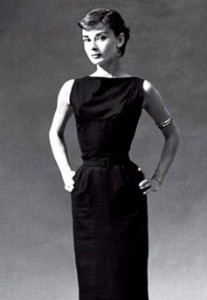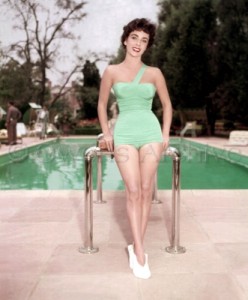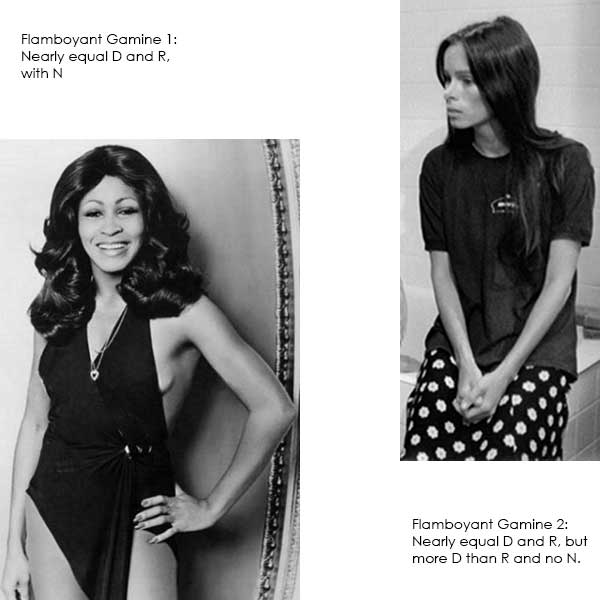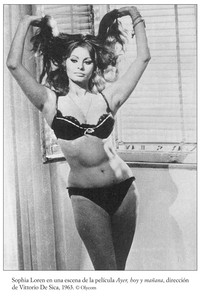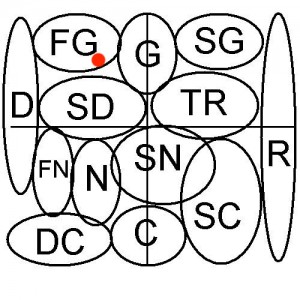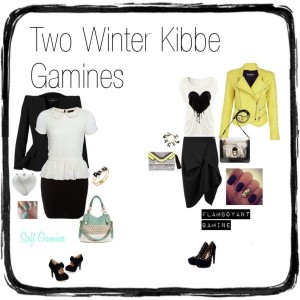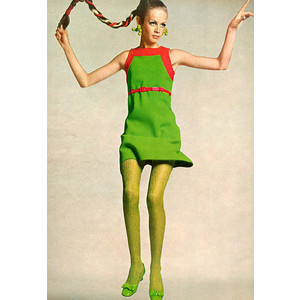
(Source
This is an issue that came up recently in the Flamboyant Gamine Facebook group. Flamboyant Gamine is often associated with the 60s Mod fashion, with generally features a lot of short shift dresses with A-line skirts. If you read the recommendations for Flamboyant Gamine and even Gamine, however, A-line skirts are seen as “too symmetrical” and get a “No” from Kibbe for both types.
Now, these do often work on FlamGam bodies, especially if the FlamGam in question is narrow-hipped, like Twiggy. This look is, in fact, so closely associated with FG that I think that people who would look good in actual FG recommendations might question themselves if they don’t look all that great in what Twiggy was wearing in the 60s. I would consider myself among this group of people–I looked great in it in high school, when I was very thin, not so much now.
This all comes back to the question of “vibe,” and how important it is. It also raises the idea of people making something a certain type, not the clothes themselves being a certain Image Identity, something that has gained a lot of traction in Kibbe circles recently.
I think this idea, more or less what Kibbe himself says now, but something that we can’t take to an extreme, comes from the fact that clothes now are constructed differently than they were in the 80s, when Kibbe wrote the book. Most things now come with stretch. If you take a bodycon-type dress and put it on a Romantic, you see sexy curves. If you put it on a Flamboyant Natural, you see their strength and power. If you put it on a Flamboyant Gamine, it looks fun. And so on. On the other hand, if you take something that is very specifically Soft Natural, like a jersey wrap dress (my clothing nemesis!), and put it on an FG, the dress won’t magically become or look FG. It will just look bad. So you have to be careful, I think, when you go outside the guidelines. It may work. It may not. If absolutely everything were simply to be shared across types and your body would just alter it, there would be no reason for Kibbe types at all, because we’d all just look fabulous in everything.
Some would say that a wrap dress has the wrong vibe, and that’s why it doesn’t work. It probably doesn’t. It is my opinion, however, that if we spend too much time looking for vibe, we end up with something akin to Dressing Your Truth: everyone in a type more or less dressing the same. Sometimes, people are shocked when they see the photos of outfits that are Kibbe-selected, especially for types like Soft Natural and Soft Gamine, which happen to be types that have their stereotypes (“boho” and “cute, in a Zooey-Deschanel way,” respectively) firmly entrenched on Pinterest, Polyvore, etc. When this happens, I think we have to ask ourselves whether Kibbe is stretching the boundaries of what a certain Image Identity can wear, or if he is actually following the rules he set out, and it is the outfits that people found looking for an SN or SG “vibe” that actually were the ones that broke the rules. As I’ve written before, I doubt that people in the Facebook groups would recognize the outfit worn by the SG in the book as Soft Gamine if someone posted it as a try on.
As for what the role of “vibe” is in clothing selection done using your Kibbe Image Identity, well, Kibbe basically contradicts himself on this one, even in the book. He says that our inner self is infinite, yet our physical self is finite, and we should express our inner self through our outer appearance. Which is great. It is a shame that his section on how to dress Shirley MacLaine is her New Age phase has never made it online, because I think it would be helpful for people who feel at odds with their Kibbe, personality-wise. The Fantasy Quiz is also not online, sadly. But the long-winded personality descriptions for each of the types ARE readily available, and I think this can lead some astray, both in finding their Kibbe type and how to dress in it once they have found it.
Among people with certain Kibbe types, you’ll find as wide a range of personalities as you would with any random group of people. You will likely have had some common experiences due to your physical similarities (e.g., for FGs, feeling like your appearance is kind of “weird”), but you will have different tastes and interests and values. You will not be a homogeneous group.
So what should Flamboyant Gamines do with A-line Mod shift dresses? Try them on. If they look good on you and you like them, great! I think they have enough crispness to fudge the rules. I think they can successfully convey an FG look. But if you are considering a type, I think it’s important to look carefully at the recommendations, and examine things with a critical eye using these recommendations before deciding whether something is a certain type or not. Don’t blow off a type because things seen as having this type’s vibe don’t work for you. The actual recommendations may suit you perfectly.
